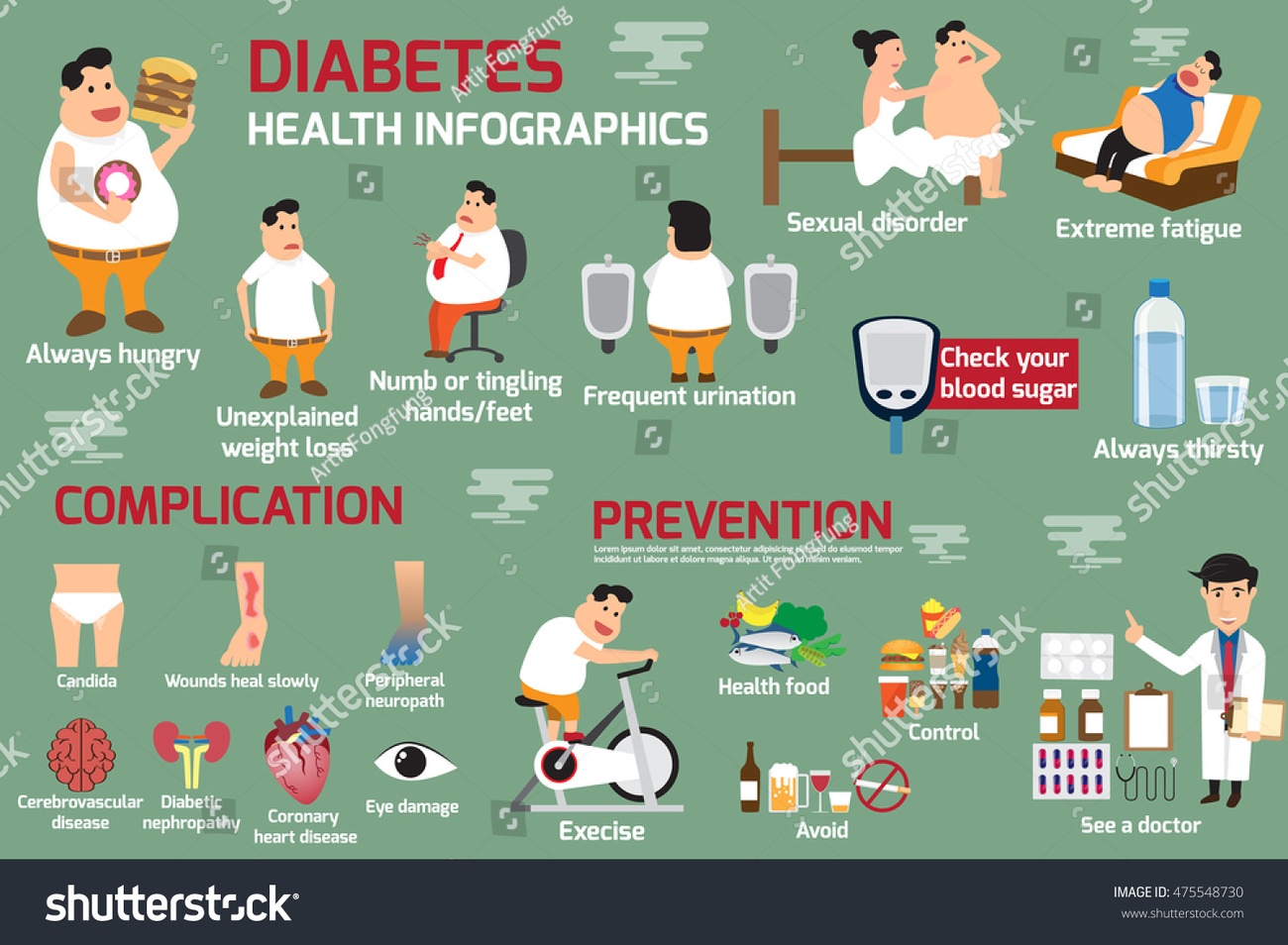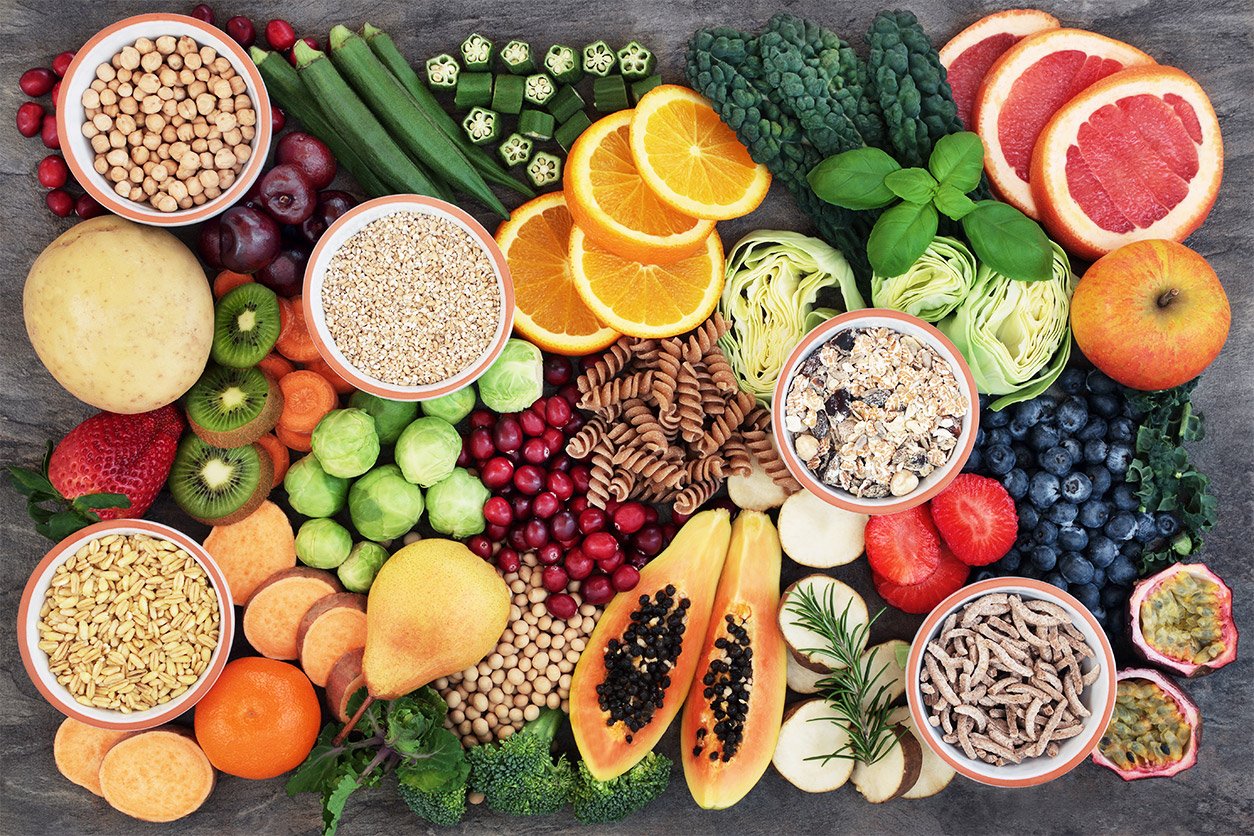11.3 percent of Americans have diabetes, and one in four don’t even know they have it. While medication is a vital part of diabetes management, natural methods to control blood sugar can improve your overall health.
Research shows natural treatments work well. People with healthy vitamin D levels have a 43% lower risk of developing type 2 diabetes than those with low levels. Natural ingredients like cinnamon can lower fasting blood sugar by 19.26 mg/dL, which shows the full potential of blood sugar supplements and natural remedies.
This piece explores proven ways to lower blood sugar naturally through three main pillars: smart food choices, research-backed supplements, and lifestyle changes that work. You’ll find how these methods together can help maintain healthy glucose levels and reduce your need for traditional treatments.
Understanding Blood Sugar and Natural Glucose Control

Image Source: Shutterstock
Blood sugar regulation works like a biological balancing act that affects your energy, mood, and long-term health. You need to understand this delicate system before you learn about natural solutions for glucose control.
How blood sugar affects your body
Your body’s cells use blood glucose as their main fuel source. The digestive system breaks down carbohydrates into glucose when you eat, and it enters your bloodstream. Your pancreas releases insulin in response, which helps glucose enter your cells to create energy.
Your body also produces glucagon, a hormone that tells your liver to release stored glucose when levels get too low. Your blood sugar stays within a healthy range because of this insulin-glucagon balance.
A malfunctioning system can cause:
- Hyperglycemia (high blood sugar): People experience increased thirst, frequent urination, fatigue, blurred vision, and headaches. Chronic hyperglycemia can damage nerves, blood vessels, tissues, and organs if left untreated.
- For those concerned about nerve damage, a potential long-term complication of high blood sugar, our article explores: 7 Essential Vitamins to Help Repair Nerve Damage
- Hypoglycemia (low blood sugar): The body responds with dizziness, sweating, anxiety, confusion, rapid heartbeat, and hunger. Severe hypoglycemia can lead to seizures or loss of consciousness without treatment.
Type 2 diabetes develops in people whose bodies don’t produce enough insulin or can’t use it well (insulin resistance). The glucose accumulates in their blood instead of entering the cells.
Why natural approaches matter
Natural blood sugar management provides several benefits. The approach targets why it happens rather than just symptoms. Type 2 diabetes often stems from insufficient movement, poor food choices, emotional stress, lack of sleep, and genetic factors.
Natural approaches usually cause fewer side effects than medications. Many plants contain compounds that help regulate blood sugar. To cite an instance, metformin, a common diabetes medication, comes from Galega officinalis, a traditional diabetes remedy used since medieval times.
Natural methods work well with conventional treatments. Research shows that chromium, magnesium, and zinc supplements can improve blood sugar control. Notwithstanding that, you should ask your healthcare provider before combining natural remedies with prescribed medications to avoid harmful interactions.
The connection between diet, lifestyle, and blood sugar
Food choices affect your glucose levels significantly. Carbohydrates influence levels the most because your body converts them to sugar. Refined carbs like white bread, white rice, and sugary cereals make blood sugar rise quickly.
Foods rich in fiber help slow down glucose absorption and create gradual increases in blood sugar levels. Your body’s blood sugar regulation improves with high-fiber diets, which also help manage type 1 diabetes.
Your glucose levels change based on several lifestyle factors:
Physical activity makes insulin work better, letting your muscles use blood sugar more efficiently for energy. A 15-minute walk after meals helps lower blood sugar.
Stress management plays a vital role since stress hormones like cortisol and epinephrine raise blood sugar. You can maintain healthier levels through meditation, deep breathing, and relaxation techniques.
Sleep quality affects glucose regulation directly. Your body makes more cortisol with insufficient rest, which raises blood sugar. Poor sleep makes you hungrier and leads to weight gain, making glucose control harder.
These connections help you make smart choices about natural approaches to blood sugar management through strategic food choices, proven supplements, or lifestyle changes.
Power Foods That Naturally Lower Blood Sugar

Image Source: AgaMatrix
Your food choices can help you control blood glucose levels naturally. The right combination of nutrients works together to keep your blood sugar balanced. Let’s explore how different food groups can help you maintain optimal glucose control.
Fiber-rich foods that slow glucose absorption
Fiber creates a protective barrier against blood sugar spikes by slowing down digestion and glucose absorption. The Dietary Guidelines for Americans suggests adults should eat 22-34 grams of fiber daily. Most people don’t meet this target.
Your stomach turns soluble fiber into a gel-like substance that excels at moderating blood sugar. Here are some great sources:
- Chickpeas – Their low glycemic index score of 28 means they raise blood sugar slowly due to their fiber and protein content
- Chia seeds – Studies show diabetic rats that ate chia seeds had substantially lower fasting blood glucose and better cholesterol levels
- Raspberries – The high fiber content gives them a glycemic index of just 25
- Oats – They contain beta-glucan that reduces post-meal glucose and insulin responses
Whole grains provide insoluble fiber that boosts insulin sensitivity and helps digestive health.
Protein sources that stabilize blood sugar
Protein keeps blood glucose steady by slowing down carbohydrate digestion and preventing sharp spikes after meals. Your body breaks down protein into glucose more slowly than carbohydrates, which creates a gradual effect on blood sugar over several hours.
Fatty fish like salmon and sardines are excellent protein choices. The American Diabetes Association recommends eating fish twice weekly. A 2020 meta-analysis in Nutrients showed that eating more fish substantially lowered coronary heart disease risk.
Here are other protein-rich options:
- Chicken and turkey (without skin)
- Eggs – People with prediabetes and type 2 diabetes who ate one large egg daily for 12 weeks saw their fasting blood glucose drop by 4.4%
- Plant proteins like lentils – Both their carbohydrate type and protein content help lower glucose
- Tofu – A 2022 meta-analysis suggests soy products can improve heart health in patients with type 2 diabetes
Healthy fats that improve insulin sensitivity
In stark comparison to this common belief, some fats can boost your body’s insulin function. Research shows a Mediterranean-style diet rich in unsaturated fats improved insulin sensitivity better than a high-carbohydrate diet.
Make these your main fat sources:
- Avocados – Half an avocado gives you 7 grams of fiber (33% of women’s daily needs) and helps reduce post-meal glucose and insulin response
- Olive oil – People who keep taking them show lower fasting glucose levels and reduced hemoglobin A1C
- Nuts – They help minimize post-meal glycemic response when eaten with carbohydrates
- Fatty fish – Contains omega-3s that can improve insulin sensitivity
The KANWU study showed that changing from saturated to monounsaturated fats improved insulin sensitivity in healthy people.
Antioxidant-rich foods that reduce inflammation
Insulin resistance often stems from chronic inflammation. Foods with anti-inflammatory properties help manage blood sugar levels. Antioxidants help curb inflammation by neutralizing harmful free radicals in cells.
These foods pack the most punch:
- Berries – Regular consumption links to better insulin resistance
- Broccoli and cruciferous vegetables – They contain sulforaphane that reduces inflammatory markers in your body
- Turmeric – Its curcumin content helps reduce diabetes-related inflammation
- Dark leafy greens – They provide vitamins A, C, K, folate, iron, calcium, and potassium while staying low in carbohydrates
Green tea stands out because it contains EGCG, a powerful antioxidant that helps fight inflammation.
You can support healthy blood glucose levels throughout the day by adding these beneficial foods to your meals.
Top Natural Supplements for Blood Sugar Support
- Weight Loss Benefits – Experience the best berberine for weight loss with our potent 1200mg formula, designed to help su…
- Enhanced Absorption with Black Pepper – Our super berberine includes black pepper to enhance absorption, ensuring you ge…
- Enhanced Absorption with Black Pepper – Our super berberine includes black pepper to enhance absorption, ensuring you ge…
Natural supplements can support healthy blood glucose levels alongside dietary changes. These supplements might boost your body’s natural glucose regulation if you use them correctly.
Cinnamon and berberine: Nature’s blood sugar regulators
Cinnamon leads the pack among natural blood sugar supplements. Research shows cinnamon can reduce fasting blood glucose by an impressive 19.26 mg/dL on average. This everyday spice makes insulin work better and might lower hemoglobin A1c levels. The best results come from taking 1-6 grams (about 0.5-2.5 teaspoons) daily for at least 20 days.
Some people call berberine “nature’s Ozempic.” This bitter compound from plants like goldenseal works differently than cinnamon. It makes insulin work better, helps produce more insulin, and cuts down glucose production in the liver. A recent study found that taking berberine (1200 mg) with cinnamon (600 mg) substantially lowered both fasting blood sugar and hemoglobin A1c compared to placebo.
Mineral supplements: Chromium, magnesium, and zinc
Your body needs chromium to use insulin properly. Higher chromium doses (200-1000 mcg daily) work better than lower ones to control blood sugar. People with diabetes tend to have less chromium in their bodies than others.
Magnesium helps run over 300 enzyme reactions in your body, including those that handle glucose. Research shows magnesium supplements reduce insulin resistance and help control blood sugar better. Zinc levels often run low in diabetic patients. This mineral helps pancreatic beta cells make insulin and improves how insulin receptors work.
Plant-based supplements: Aloe vera, gymnema, and fenugreek
Aloe vera can lower both fasting blood glucose and hemoglobin A1c levels. Stick to eight ounces or less of aloe vera juice daily to avoid stomach issues.
Gymnema sylvestre earned its Hindi nickname “sugar destroyer.” It blocks glucose absorption in your gut and might trigger insulin release. Studies show this Ayurvedic herb helps lower fasting blood glucose.
Fenugreek seeds contain a special amino acid called 4-hydroxyisoleucine that makes your pancreas release insulin. Recent research from 2023 suggests fenugreek supplements might lower A1c and after-meal blood sugar.
Vitamin D and alpha-lipoic acid for metabolic health
Low vitamin D raises your type 2 diabetes risk. People with good vitamin D levels have 43% less risk than those running low. Taking vitamin D might help your pancreas work better and make insulin more effective.
Your liver makes alpha-lipoic acid (ALA), a strong antioxidant. ALA supplements can reach your brain and might protect both brain and nerve tissue. Research indicates ALA helps insulin work better and treats diabetic nerve pain.
Daily Lifestyle Habits for Optimal Glucose Control

Image Source: Medium
Lifestyle changes are the foundations of natural glucose control. These work among diet and supplements to create a detailed approach to managing blood sugar levels.
Exercise routines that improve insulin sensitivity
Your body’s glucose processing changes with physical activity. During exercise, your muscles use blood sugar for energy. This can lower your blood glucose up to 24 hours after your workout. Exercise enhances insulin sensitivity, which helps your muscle cells use available insulin better.
To delve deeper into the remarkable benefits of incorporating a daily walk into your routine for overall wellness and improved insulin sensitivity, be sure to read our article: Unlock Your Wellness: The Surprising Power of a Daily Walk!
The best results come from:
- 150 minutes of moderate aerobic activity weekly (about 30 minutes daily)
- Strength training 2-3 times per week
- Post-meal walks (10-20 minutes) to regulate blood sugar spikes
8 weeks of consistent exercise can restore healthy insulin activity in the brain. This improves metabolism, reduces hunger, and decreases abdominal fat. Aerobic and resistance exercises combined produce better improvements in insulin sensitivity than either type alone.
Stress management techniques for hormonal balance
Your body releases hormones like cortisol and adrenaline under stress. These hormones make it harder for insulin to work properly (insulin resistance). Blood sugar levels rise as a result. This relationship becomes crucial for people with diabetes because stress can substantially affect their condition control.
Stress-reduction strategies that work include:
Mindfulness and meditation – Regular practice reduces stress and leads to better eating habits
Deep breathing exercises – Sit comfortably with closed eyes, inhale slowly through your nose, hold briefly, then exhale slowly through your mouth
Progressive muscle relaxation – Tense and release muscle groups systematically from toes to head
Sleep strategies for better blood sugar regulation
One night of partial sleep deprivation increases insulin resistance. Poor sleep habits make blood sugar management difficult for people with diabetes.
Better sleep quality comes from:
- A consistent sleep schedule
- Limited screen time before bed
- No caffeine and alcohol near bedtime
- A cool and comfortable bedroom
Continuous glucose monitoring research shows that late bedtimes and short sleep duration link to poor glycemic control. Earlier bedtimes and longer sleep duration can help stabilize blood sugar levels.
Creating Your Personal Natural Glucose Control Plan

Image Source: World of Printables
Blood sugar control works best with a customized approach. Your natural glucose control plan starts when you understand your unique blood sugar patterns and combine dietary, supplement, and lifestyle changes strategically.
Assessing your current blood sugar patterns
Regular monitoring forms the foundations of good blood sugar management. Diabetic patients should check their glucose at consistent times to spot patterns in level changes. You’ll get better results by checking before and after meals, plus before and after exercise.
A glucose meter with finger sticks or a continuous glucose monitor (CGM) can help track your levels. Your records should include dates, times, and circumstances for each reading—like pre-meal or post-activity measurements. These details help you and your healthcare provider spot trends and shape your treatment plan better.
Combining foods, supplements, and lifestyle changes effectively
Results improve when you take an comprehensive approach rather than using supplements alone. The plate method offers a good starting point—fill half your plate with non-starchy vegetables, one-quarter with quality protein, and one-quarter with healthy carbohydrates.
To balance meals effectively:
- Equal portions of protein and carbohydrates slow down glucose absorption
- Your blood glucose needs 2-3 hours between meals to return to desirable levels
- Water helps—just 6-8 ounces with meals can slow blood sugar rises
The key to success lies in consistency when combining natural glucose control methods. Your body utilizes insulin better when you eat meals at regular times. Without doubt, your supplement schedule should support these dietary efforts—take blood sugar supplements as directed while following your food plan.
Tracking progress and making adjustments
Long-term success depends on regular assessment. Your healthcare provider can help set target blood sugar ranges that work specifically for you. These customized targets reflect your age, diabetes status, and overall health.
High readings at the same time over several days might signal the need for plan adjustments. Note that blood glucose results can stir up strong emotions, but they simply provide information to help fine-tune your approach. This analytical strategy helps you build a green plan that naturally supports healthy blood sugar levels.
To better understand the journey of natural glucose control and be inspired by the possibility of reversing diabetes through lifestyle changes, watch this video:
Conclusion
Blood sugar management works best with smart food choices, proven supplements and consistent habits. Research shows that fiber-rich foods, quality proteins and healthy fats help keep glucose levels stable throughout the day. On top of that, supplements like cinnamon, berberine and essential minerals help your body’s natural glucose regulation.
Your success relies on creating eco-friendly daily routines. Simple changes like walking after meals, managing stress and getting better sleep make a big difference. Regular monitoring helps you understand your body’s responses so you can adjust your approach.
Note that everyone responds differently, and you should talk to healthcare professionals before starting any new supplement or exercise routine. Find out how natural ingredients can help your experience toward healthy glucose control. Check our suggestions!
The key is to start small and stay consistent while giving your body time to adapt to these positive changes. People often see improvements within weeks by taking a complete natural approach to blood sugar management. You can take control of your glucose levels naturally through mindful food choices, targeted supplements and healthy habits.
FAQs
Q1. What are some natural ways to lower blood sugar? Natural ways to lower blood sugar include eating fiber-rich foods, consuming lean proteins, incorporating healthy fats, exercising regularly, managing stress, and getting adequate sleep. Additionally, certain supplements like cinnamon and berberine may help regulate blood glucose levels.
Q2. How does exercise affect blood sugar control? Exercise improves insulin sensitivity, allowing muscles to use blood sugar more efficiently for energy. Aim for 150 minutes of moderate aerobic activity weekly and include strength training 2-3 times a week. Even short post-meal walks can help regulate blood sugar spikes.
Q3. Can certain foods help stabilize blood sugar levels? Yes, foods high in fiber (like chickpeas and raspberries), lean proteins (such as fish and eggs), and healthy fats (like avocados and nuts) can help stabilize blood sugar levels. These foods slow down glucose absorption and promote more gradual increases in blood sugar.
Q4. What role do supplements play in blood sugar management? Supplements like chromium, magnesium, and zinc can support healthy blood sugar levels. Cinnamon and berberine have shown promising results in improving insulin sensitivity and reducing fasting blood glucose. However, it’s important to consult with a healthcare provider before starting any new supplement regimen.
Q5. How does stress impact blood glucose levels? Stress triggers the release of hormones like cortisol and adrenaline, which can make it harder for insulin to work properly, leading to increased blood sugar levels. Implementing stress-reduction techniques such as mindfulness, meditation, and deep breathing exercises can help maintain better glucose control.
